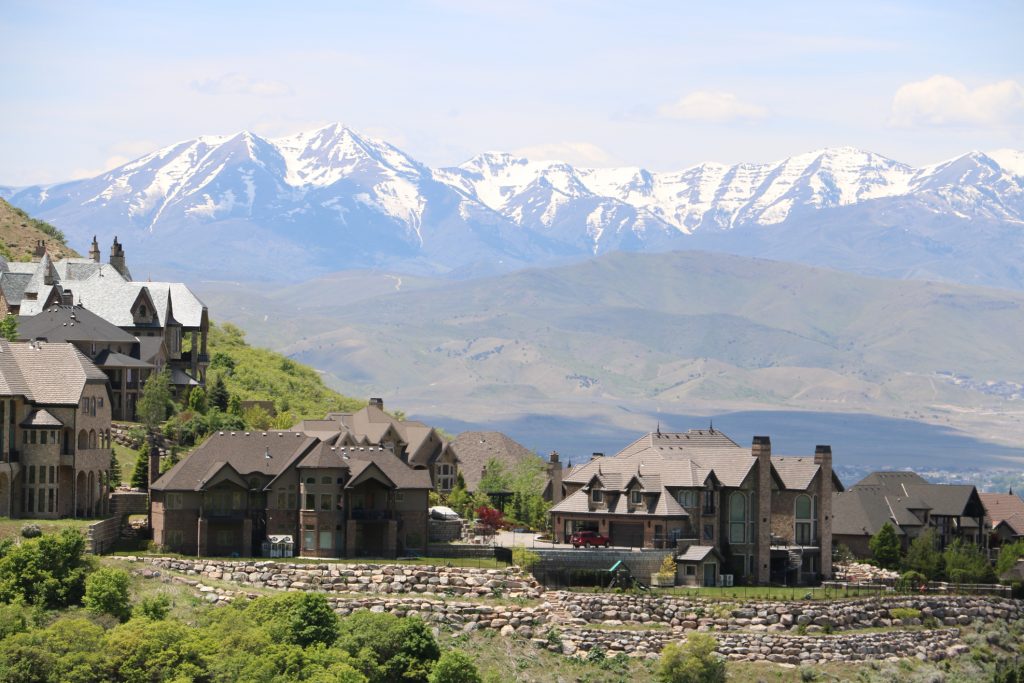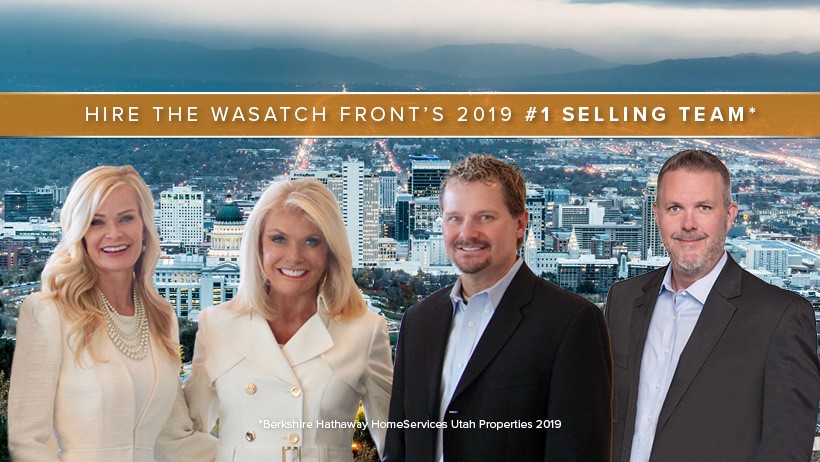The pandemic has supercharged Utah’s housing market

Homes sales along the Wasatch Front and in other pockets of the state have rebounded dramatically after what proved to be a milder-than-expected slowdown as the coronavirus first took hold in the spring. This is a market bounce with the potential to buoy Utah’s economy, driven in part by people who can now work from anywhere and those looking to get closer to nature. It’s also driven by historically low interest rates and Utah’s best-in-country unemployment rate.
“June and July were, frankly, nuts,” said Alicia Holdaway, president of the Salt Lake Board of Realtors. Utah, she said, is now one of the top real estate markets in the nation.
Social shifts created by the pandemic are not only drawing people to Utah from places like New York, California, Florida and Texas, but also creating waves of residents relocating inside the state. Many are dropping downtown condominiums for more space and quiet in suburban settings.
Interest rates on a typical 30-year mortgage are now well below 3%, a new all-time low, and that has spurred on many borrowers who were waiting. Included are young people in Utah who have managed to save money while staying at home and are now putting those nest eggs toward a down payment. And while home prices remain high, buyers moving for pandemic-related reasons are commonly selling a home they have equity in, getting a lower interest rate and reducing their commute times to boot.
Utah offers not only its ski and redrock recreational treasures, but it also seems to those coming in from larger states to be a place with room to social distance, relatively free of lockdowns.
Software sales executive Christin Anderson got a green light in June from her employer to work from home indefinitely. The primary draws of her life in San Francisco — public events, live entertainment, movies — remain dormant anyway, so the Bay Area resident opted to rent her condo and booked a long-term Airbnb in Park City, to see what it was like.
A five-week stint in Utah morphed into home hunting and Anderson bought a two-bedroom town house in late August less than a five-minute walk from downtown. She’s delighted with the move. “The pandemic,” Anderson said, “presented an opportunity to live where I want to live instead of living near my physical company office.”
‘Never seen anything like this’
Don’t underestimate the power of Utah’s low unemployment rate. It was a big magnet pulling growth the state’s way with record lows as recently as February. Almost six months into the pandemic, that rate, is at roughly 4.5% — almost half the most recent U.S. rate of 9.2%.
Gina Stocksdale recently relocated to Taylorsville from Ontario, Calif., to be closer to five of her six children. She said she had 26 job openings to apply for in Utah as she sought employment with the move in mind.
“You guys call it ‘life balance’? Yeah, that doesn’t exist in California,” the 57-year-old account manager joked about the change of pace since moving to her new town home. “I find that there’s a lot less pressure. And I like that attitude.”
Real estate brokers focusing on relocating families say the new demand is pushing out to locales not usually seen as buying hot spots, such as Logan and Richfield.
Luxury mountain properties and suburban single-family homes with larger lots along the Silicon Slopes corridor are getting special attention, agents say, but demand for everything is high right now.
Salt Lake County set an all-time record for home sales in a single month in July, according to new data. Sales were also up in June and July for retirement communities in St. George, pushing home inventories across that area to new lows.
And with healthier outdoor living and recreation now at a premium, Summit and Wasatch counties are gaining in sales as never before, according to data and longtime market experts.
Something of a rural backwater a little more than 20 years ago, the resort town of Park City and surrounding communities continue to rise as a destination for luxury buyers and investors moving full time from larger states, well-heeled college students who want to ski while learning remotely and those buying vacation properties as they ride out the health crisis.
Homes sales in Park City for July and August alone were double their levels from those same months in 2019.
“I’ve definitely experienced some cycles,” said Michael Hebert, a real estate agent covering Park City and Summit and Wasatch counties since 1996, “but I’ve never seen anything like this.”
‘25 offers on a property’
Looking back, the coronavirus resulted in some initial turbulence for Utah’s real estate industry but didn’t have major lasting effects.
Lobbyists pushed hard to make sure those in the real estate sector were deemed “essential workers” in all of Utah’s initial county-issued health decrees, which not all states did. It led to new approaches to showings, staggered open houses and a big move to virtual tours. Sales slowed a bit in April and May and then roared back.
Now an emerging issue is heightened demand and dwindling inventories of existing homes. This is only deepening the state’s concerns about affordable housing.
The first half of 2020 saw sales reach an unexpectedly mild decline of only 2% below the same months of 2019. In and around Park City, first half sales were 2% above last year. Salt Lake County’s July numbers then beat the highest months of overheated sales leading into the Great Recession a decade ago.
August was similarly intense, agents say, but the unexpected drawdown on inventories of existing homes may have started to slow sales already.
Homes in Salt Lake County now boast the Wasatch Front’s highest median price, at more than $406,960, all housing types included. For the five-county area of Weber, Davis, Salt Lake, Utah and Tooele counties, that price is now above $343,500.
The Wasatch Front’s most expensive ZIP codes are now Emigration Canyon, 84108, with a median price of $725,000; the Avenues, 84103, at $687,500; Utah County’s Alpine, 84004, at $682,500; Eden in Weber County, 84310, at $604,000; and suburban Draper, 84020, at $600,000.
By this time in the early fall, the Wasatch Front usually has five times the property listings it currently has to show to buyers.
“That’s why we get 25 offers on a property,” said Babs De Lay, a veteran real estate agent specializing in residences in the Salt Lake City area. “It’s just everything is selling over the asking price.”
‘Lifestyle’ choices
It’s another world up in Park City, where the median home price hovers around $2 million. Home sales are “on fire” there and in surrounding areas in what City Council member Tim Henney says is a historic spate of buying that could change that resort community forever.
At the end of August, pending home sales in the resort town were on track to top $564 million, compared to $215 million by that same time last year.
“This is what we know is happening around the country, with people fleeing cities where there’s more density for suburbs and and places like Park City, where they feel the lifestyle is such that they can physically distance,” Henney said. “You have a face mask mandate, which is an order and everybody is complying, and it creates a sense of safety.”
Utah also has emerged as a more affordable alternative to Aspen or Vail, Colo., for college collaboration houses, clusters of students renting vacation homes to take advantage of the outdoors while they complete their coursework online.
Even under stay-at-home orders in Summit and Wasatch counties issued in early spring, “people were still putting skins on their skis and skiing. They were hiking. People could still get out,” said William Winstead, a broker with Summit Sotheby’s and president of Park City Board of Realtors.
“Plus, schools are open here, whereas a lot of those in coastal areas are not,” Winstead said. “People are coming here for that.”
/s3.amazonaws.com/arc-authors/sltrib/48ecdc6d-e10f-49bd-964a-a05463b17594.jpg)
SEARCH ALL UTAH HOMES


lindasecrist.com
Linda Secrist’s Salt Lake City Real Estate Home Page • Salt Lake City Real Estate • Draper Real Estate • Holladay Real Estate • Sandy Real Estate • South Jordan Utah Real Estate • Salt Lake City’s Top Real Estate Agent
Linda Secrist & Associates is the top selling team in luxury homes in the SLC Market. They have received countless awards over the past 20 years, including “Sales Team of The Year” for over 10 years including 2018! Linda Secrist is #54 in the top 100 Agents in the World in luxury residential real estate. If you’re searching for homes in Sandy, Salt Lake, Cottonwood Heights, Millcreek, Draper, South Jordan, Bountiful, Centerville, Farmington or anywhere in northern Utah, Linda Secrist & Associates are the real estate agents to call. If you’re buying or selling a home, don’t hesitate to text or call us at 801-455-9999!